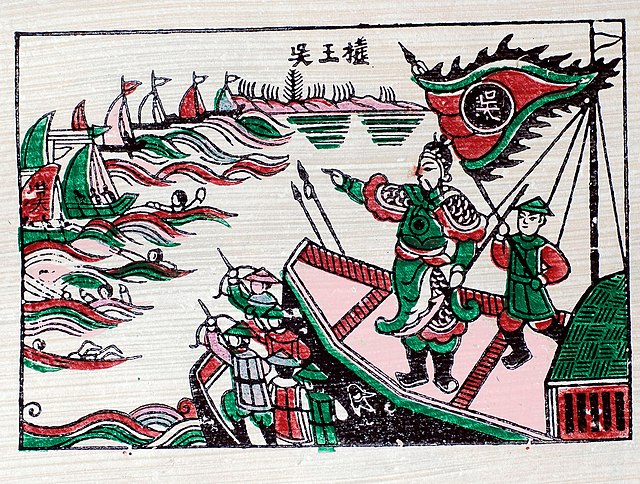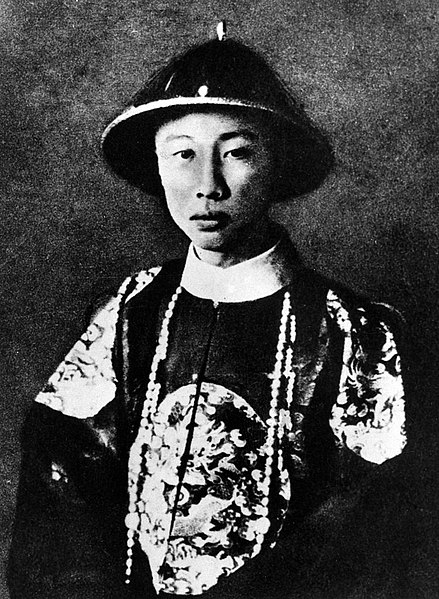Southern Han (Chinese: 南漢; pinyin: Nán Hàn; Jyutping: Naam4 Hon3; 917–971), officially Han (Chinese: 漢), originally Yue (Chinese: 越), was a dynastic state of China and one of the Ten Kingdoms that existed during the Five Dynasties and Ten Kingdoms period. It was located on China's southern coast, controlling modern Guangdong and Guangxi. The dynasty greatly expanded its capital Xingwang Fu (Chinese: 興王府; pinyin: Xìngwáng Fǔ; Jyutping: Hing1wong4 Fu2, present-day Guangzhou). It attempted but failed to annex the autonomous polity of Jinghai, which was controlled by the Vietnamese.
Đông Hồ woodblock depiction of Ngô Quyền leading his troops against Southern Han forces on the Bạch Đằng River, 938 AD
For most of its history, China was organized into various dynastic states under the rule of hereditary monarchs. Beginning with the establishment of dynastic rule by Yu the Great c. 2070 BC, and ending with the abdication of the Xuantong Emperor in AD 1912, Chinese historiography came to organize itself around the succession of monarchical dynasties. Besides those established by the dominant Han ethnic group or its spiritual Huaxia predecessors, dynasties throughout Chinese history were also founded by non-Han peoples.
A depiction of Yu, the initiator of dynastic rule in China, by the Southern Song court painter Ma Lin.
A photograph of the Xuantong Emperor, widely considered to be the last legitimate monarch of China, taken in AD 1922.
Image: Han Guangwu Di
Image: Liu Bei Tang





